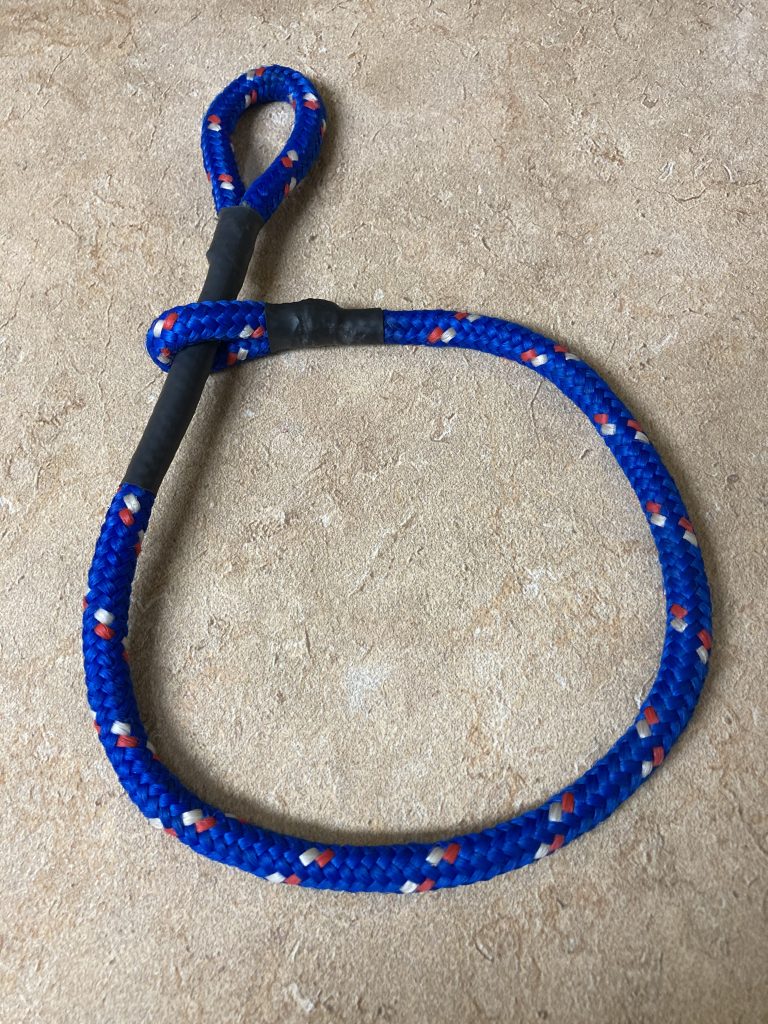Push Pole Belt Tether:
Sight-fishing while poling a skiff solo can be challenging. Once fish are spotted, you have to secure the push pole before picking up the rod. Those motions often mean briefly losing sight of the targets. There are several commercial solutions, including the well-made Tibor push pole caddy. I have one mounted to the starboard aft corner of my platform and use it to stow the pole when climbing up and down. But the low placement and long reach is not ideal when actively fishing. Belt-worn push pole holders are also available, but they are uncomfortable and tend to bind when pivoting for a cast. A handcrafted tether is a inexpensive and practical solution. Here’s how to make one:
I started with a scrap piece of braided 3/8-inch nylon rope, 30-pound test Power Pro braided fishing line and some heat shrink. Marine/hardware stores often sell nylon rope by the foot; a two-foot section of 1/2- or 3/8-inch diameter is more than enough.
Start by making the pole end splice first with a very tight loop. Fold the rope and whip finish the loop connection using the Power Pro fishing line. First tie a few surgeon’s knots to lock the loop and then wrap the braid down the tag end. Pull tightly as you layer the wraps to cinch into the nylon for a secure, compact connection. Cotton gloves or a rag may help to really apply pressure. Tie a couple more surgeon’s knots to finish and cut off the remaining braid remnants. Slide a short piece of heat shrink over the wraps and using a fireplace lighter, shrink it down tight.
Next thread the longer tag end through the pole loop. Measure the nylon rope to allow for a large enough opening for the push pole foot, if necessary, and then slide another piece of heat shrink on first before whip-finishing a larger belt loop. Heat the shrink tubing again and you are finished. The total time of construction, including gathering the materials and making the wraps is about 20 minutes. The finished tether is very light, flexible and holds the push pole securely. Best of all, it’s right by your side so the pole can be stowed quickly and quietly while you keep your eyes on the prize.
